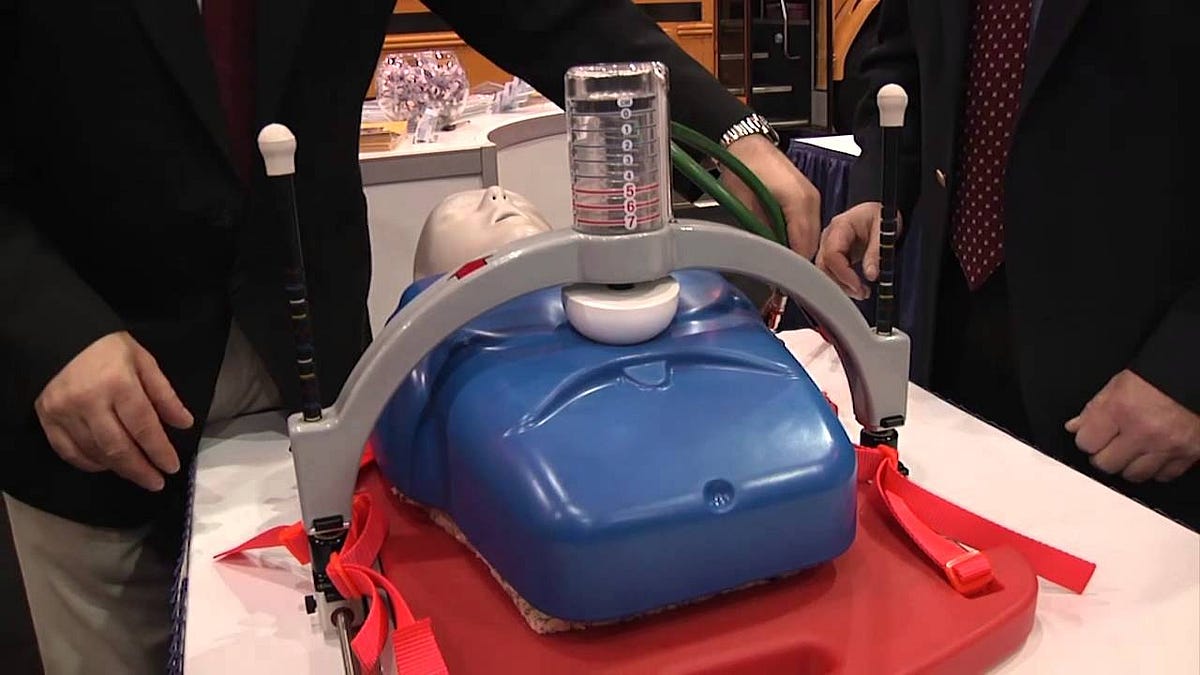Cardiac arrest can strike anyone, anywhere and anytime. Every minute counts when someone suffers from sudden cardiac arrest as the chance of survival decreases by 10% with each passing minute without CPR and defibrillation. Performing high-quality cardiopulmonary resuscitation (CPR) is critical to maximizing a patient’s chance of survival until emergency medical services can provide advanced life support. However, manual CPR is not always provided promptly or performed optimally due to numerous barriers such as lack of trained responders, fatigue of rescuers or unwillingness to perform compressions due to fear of disease transmission. Automated CPR devices aim to address many of these barriers by providing consistent, high-quality chest compressions until EMS arrives at the scene.
The Need for Automated CPR
According to the American Heart Association, over 350,000 out-of-hospital cardiac arrests occur in the United States each year, with a low national survival rate of just 10-12%. One of the major reasons for the low survival rate is that a significant number of victims do not receive any bystander CPR. Studies have found that immediate bystander CPR can double or triple a cardiac arrest victim’s chance of survival. However, less than half of cardiac arrest victims receive bystander CPR. There are several reasons for the low bystander CPR rates including lack of training, panic at the scene, fear of infections and early rescuer fatigue affecting compression quality. Automated CPR devices aim to address these barriers by providing immediate high-quality chest compressions to cardiac arrest victims until emergency medical help arrives.
Types of Automated CPR Devices
There are different types of Automated CPR Devices available that provide mechanical chest compressions to cardiac arrest patients:
– Load-Distributing Band Devices: These consist of an automated band that wraps around the patient’s chest and provides circumferential compressions. Examples include the Lund University Cardiopulmonary Assistance System (LUCAS) and AutoPulse.
– Backboard Devices: Devices like the CPRmeter attach to a backboard and deliver chest compressions with a load-distributing plunger mechanism.
– Vest/Jacket Devices: Vest-style automated CPR devices like the LifeStream and ZOLL LifeVest can be routinely worn by cardiac patients to provide chest compressions if cardiac arrest occurs.
– Chest Compression System: Systems like the LifeCPR device are designed to be quickly placed under a patient’s torso and deliver uninterrupted chest compressions through a self-adhering pad.
Benefits of Automated CPR
Automated CPR devices offer several benefits over manual chest compressions:
– Consistency: Automated devices deliver consistent, high-quality chest compressions of uniform depth, rate and recoil according to the latest AHA guidelines without any interruptions.
– Reduced Rescuer Fatigue: During a prolonged resuscitation, the quality of manual CPR decreases due to provider fatigue. Automated CPR avoids this issue by delivering continuous compressions without tiring.
– Ease of Use: Automated devices are very easy to deploy and use for laypersons and healthcare providers alike. They eliminate the need for frequent provider rotations during resuscitation.
– Reduced Risk of Infection: Rescuers may be hesitant to perform mouth-to-mouth due to fear of disease transmission. Automated devices avoid this issue by delivering compressions only without any ventilations.
– Suitability for all Patients: Elderly patients, obese patients or those with hard rib cages may be difficult to compress manually. Automated CPR can be used effectively in all patients irrespective of body size or age.
Evidence Supporting Automated CPR
Multiple clinical studies have demonstrated the benefits of automated chest compressions over standard manual CPR:
– In a study of 606 cardiac arrest patients, those receiving mechanical CPR with an LUCAS device had significantly improved rates of return of spontaneous circulation and survival to hospital discharge compared to manual CPR.
– Another trial of 606 out-of-hospital cardiac arrest victims found that use of the AutoPulse vest CPR device produced better neurologically intact survival compared to manual compressions.
– A meta-analysis of 18 trials involving 3658 cardiac arrest patients concluded that mechanical chest compressions improved ROSC, survival to hospital admission and neurological outcomes compared to standard CPR.
– Use of LUCAS devices during ambulance transport in a study of 3236 patients resulted in higher survival rates than manual compressions during transport.
Expert Consensus Statements
Major resuscitation guidelines now recommend the use of mechanical chest compression devices as an alternative to high-quality manual CPR. Expert consensus statements from the AHA and ERC emphasize:
– Mechanical CPR should be considered as an alternative to manual CPR for prolonged resuscitations, during transport or where rescuer fatigue is a concern.
– Automated CPR devices establish a high baseline standard for compressions that may be difficult to achieve and sustain with manual chest compressions alone.
– Mechanical compressions allow rescuers to focus on other critical tasks like IV access, drug delivery and advanced airway management while compressions continue uninterrupted.
Future Directions
As evidence supporting the benefits of automated CPR grows, these devices may become a standard of care in the near future. More public access defibrillation programs are equipping police cars, airports and public places with user-friendly automated CPR-D devices. Future research aims to integrate real-time physiological monitoring into automated CPR to help guide resuscitation and titrate therapies. Miniaturized wearable devices for high-risk cardiac patients also hold promise. With ongoing innovation, automated CPR has the potential to significantly improve out-of-hospital cardiac arrest survival rates worldwide.
Automated mechanical CPR provides a major advantage over manual chest compressions by delivering uninterrupted, high-quality compressions according to the latest guidelines. Evidence from clinical studies support better outcomes with automated devices. As technologies evolve to make automated CPR even more portable and user-friendly, these devices have the potential to transform cardiopulmonary resuscitation practices globally and improve survival from sudden cardiac arrest.
*Note:
1. Source: Coherent Market Insights, Public sources, Desk research
2. We have leveraged AI tools to mine information and compile it

